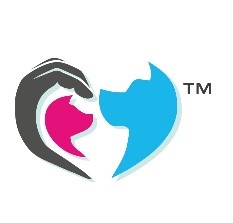As our understanding of animal behaviour and welfare continues to evolve, it becomes increasingly necessary that the frameworks used to measure these elements evolve alongside our understanding of them and are capable of assessing the needs of animals in various settings. While the Five Freedoms Model has long been considered a cornerstone of animal welfare, there is a growing recognition among professionals in the field that this model is outdated and limited in scope. In their place, a more comprehensive and nuanced approach known as the Five Domains Model gained traction, offering a more holistic understanding of animal welfare that encompasses a broader range of physical, psychological, and behavioural considerations.
The Five Freedoms, originally proposed by the UK Farm Animal Welfare Council in 1965 and subsequently adopted by various animal welfare organizations worldwide, outline five essential freedoms that animals should be entitled to:
1. Freedom from hunger and thirst
2. Freedom from discomfort
3. Freedom from pain, injury, and disease
4. Freedom to express normal behaviour
5. Freedom from fear and distress
While the Five Freedoms have undoubtedly played a crucial role in raising awareness about the basic needs of animals and promoting welfare improvements, they have been criticized for their focus on negative aspects of welfare and their failure to address the full spectrum of an animal’s well-being. Moreover, they often fall short in capturing the complexity of animal behaviour and the multifaceted nature of welfare.
In response to these limitations, the Five Domains Model offers a more comprehensive framework for assessing and evaluating animal welfare. Developed by Professor David Mellor and colleagues, the model expands upon the Five Freedoms by incorporating five distinct domains that collectively contribute to an animal’s overall welfare:
1. Nutrition: This domain encompasses an animal’s dietary needs, including access to appropriate food and water that meet their nutritional requirements. It also considers factors such as feeding methods, food quality, and the ability to forage or engage in natural feeding behaviours.
2. Physical Environment: The physical environment domain refers to the conditions in which an animal is housed or kept, including factors such as housing design, space availability, temperature, humidity, and ventilation. It considers the impact of the environment on an animal’s comfort, safety, and ability to engage in natural behaviours.
3. Health: Health is a fundamental aspect of welfare, and this domain focuses on the physical well-being of animals, including their freedom from disease, injury, and pain. It encompasses aspects such as veterinary care, disease prevention, parasite control, and the management of injuries or illnesses.
4. Behavioural Interactions: Animals are often social beings, and their welfare is influenced by their interactions with conspecifics and other species. This domain considers the quality and quantity of social interactions, the presence of positive or negative social experiences, and the opportunity for animals to engage in social behaviours that are important for their well-being.
5. Mental State: The mental state domain addresses the emotional well-being of animals, including their ability to experience positive emotions such as pleasure, happiness, and contentment, as well as their freedom from negative emotions such as fear, anxiety, and frustration. It considers factors such as environmental enrichment, cognitive stimulation, and the provision of opportunities for animals to experience positive affective states.
The Five Domains Model offers several advantages over the traditional Five Freedoms framework:
1. Comprehensiveness: By considering five distinct domains of welfare, the model provides a more comprehensive and holistic understanding of animal welfare, encompassing a broader range of physical, psychological, and behavioural needs.
2. Focus on Positive Welfare: Unlike the Five Freedoms, which primarily focus on avoiding negative experiences, the Five Domains Model places greater emphasis on promoting positive welfare by addressing the factors that contribute to an animal’s overall well-being, including their ability to experience positive emotions and engage in natural behaviours.
3. Flexibility and Adaptability: The Five Domains Model is flexible and adaptable to different species, environments, and contexts, allowing for tailored assessments and welfare interventions that take into account the unique needs and characteristics of each animal.
4. Scientific Rigor: The Five Domains Model is grounded in scientific principles and evidence-based research, making it a robust and reliable framework for assessing and improving animal welfare.
MHERA, introduced by Karin Pienaar in 2022, provides us with an excellent and comprehensive framework that provides the practical ‘how to’ part of evaluating WELLBEING with the Five Domains Model as the foundation. MHERA offers a holistic approach to understanding and improving animal well-being across the domains of nutrition, physical environment, health, behavioural interactions, and mental state. Through MHERA, researchers and practitioners can gain valuable insights into the complex interplay of factors that influence animal well-being, facilitating evidence-based interventions and promoting positive outcomes for animals in various settings.





